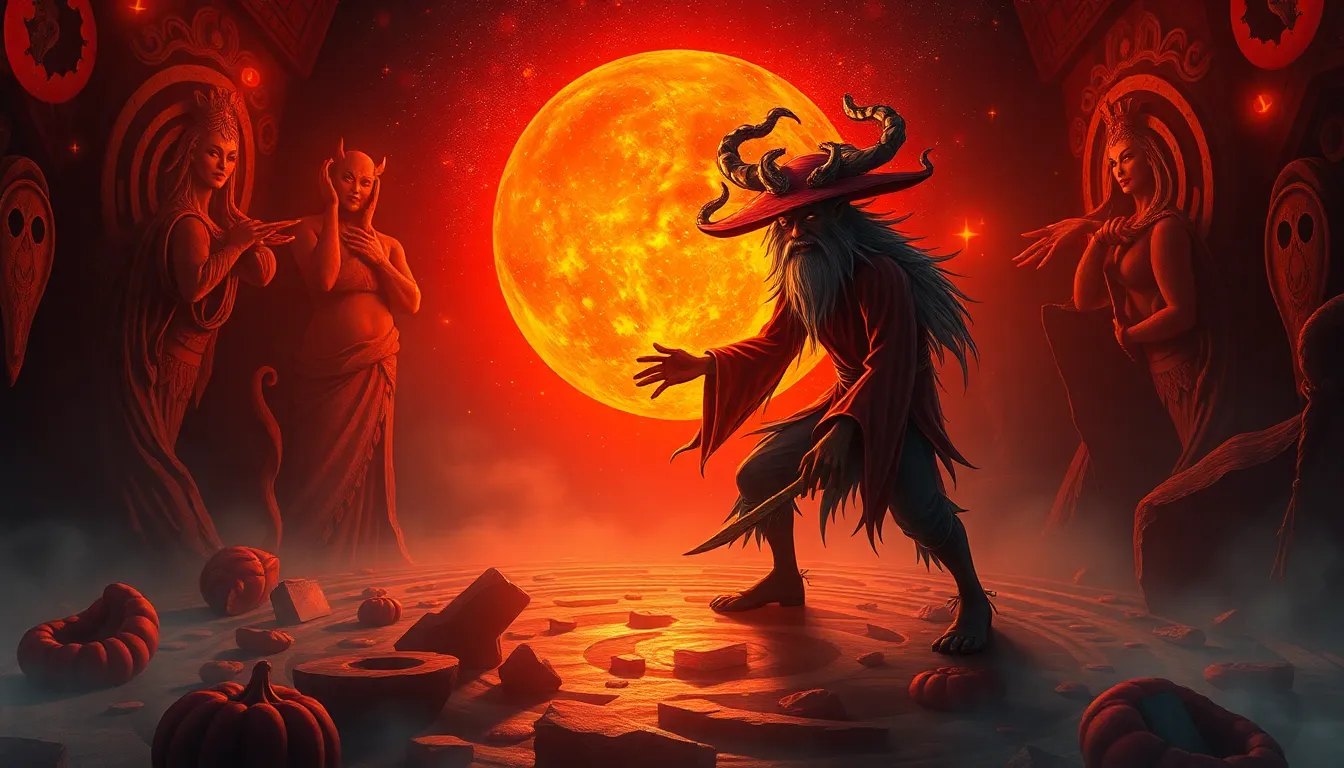Trickster Tales: A Reflection of Society’s Values
Introduction to Trickster Tales
Trickster tales are a fascinating genre of folklore that feature clever, mischievous characters who use their wits to outsmart others. These tales often involve a blend of humor, wisdom, and moral lessons, making them not only entertaining but also insightful reflections of the cultures from which they originate. Tricksters can be animals, humans, or even divine beings, and their stories address complex themes such as morality, ethics, and the human condition.
The historical significance of trickster tales spans across cultures, evolving through oral traditions and eventually being documented in written forms. They serve as cultural touchstones that capture the values, beliefs, and societal norms of the communities that tell them.
The Archetype of the Trickster
The trickster archetype is prevalent in folklore across the globe. These characters often embody a dual nature, possessing both positive and negative traits. Common characteristics of tricksters include:
- Cunning and intelligence
- Playfulness and humor
- Nonconformity and rebellion against societal norms
- Shape-shifting abilities, allowing for transformation
- Ambiguous morality, often blurring the lines between right and wrong
Tricksters often challenge the status quo, serving as agents of change and transformation within their narratives.
Cultural Variations of Trickster Tales
Trickster tales can be found in numerous cultures, each offering unique perspectives and themes. For instance:
- Anansi from African folklore: Often depicted as a spider, Anansi is known for his cleverness and ability to outsmart larger and stronger foes. His stories often impart lessons about wisdom and the importance of storytelling.
- Coyote in Native American mythology: Coyote is a complex figure who is both a creator and a trickster. His tales often emphasize the balance between chaos and order, while also providing moral lessons about humility and respect.
- Hermes in Greek mythology: As the messenger of the gods, Hermes embodies trickster qualities through his cunning and speed. His stories often involve the theft of Apollo’s cattle, illustrating themes of wit and resourcefulness.
Despite their cultural differences, these tales share common themes such as the struggle against authority, the importance of cleverness, and the exploration of morality.
Trickster Tales as Social Commentary
Trickster tales frequently serve as social commentary, reflecting the norms and values of the societies that tell them. These narratives provide insights into human behavior and societal expectations. For example:
- They often question established norms, encouraging listeners to think critically about authority and tradition.
- Moral lessons are embedded in the stories, teaching values such as honesty, humility, and resilience.
Through their escapades, tricksters highlight the flaws and contradictions within society, prompting reflection and discussion among their audiences.
Subversion of Authority in Trickster Tales
A key aspect of trickster tales is their ability to subvert authority. Tricksters often find themselves in opposition to powerful figures, whether they be gods, kings, or societal leaders. This defiance serves several purposes:
- It empowers the marginalized, showing that intelligence and wit can triumph over brute strength and oppression.
- It challenges the status quo, encouraging audiences to question the legitimacy of authority figures.
These narratives can influence societal perceptions of power, demonstrating that authority is not always synonymous with wisdom or morality.
Humor and Satire in Trickster Tales
Humor plays a vital role in trickster tales, often serving as a tool for critique and reflection. The use of satire allows storytellers to address serious societal issues while engaging their audience in a lighthearted manner. For instance:
- Coyote’s antics often reveal the absurdity of human behavior and societal norms.
- Anansi’s stories frequently highlight the folly of greed and the consequences of selfishness.
These humorous narratives not only entertain but also provoke thought, making them an effective medium for social commentary.
The Role of Gender in Trickster Narratives
Gender dynamics within trickster tales offer an intriguing lens through which to examine societal values. Male tricksters, such as Coyote and Anansi, often exhibit traits of aggression and cunning, while female tricksters, such as Br’er Rabbit’s sister, may embody different qualities:
- Female tricksters often use charm and intelligence rather than brute force.
- They may challenge gender norms by taking on roles that defy traditional expectations.
This contrast highlights the complexity of gender roles in society and how they are reflected in folklore.
Modern Adaptations and Reinterpretations
In contemporary literature, film, and media, trickster tales continue to evolve and resonate with modern audiences. Adaptations often reflect current societal values and issues, such as:
- Environmental concerns, with tricksters embodying themes of nature and sustainability.
- Social justice, where tricksters challenge systemic inequalities.
These retellings not only preserve the essence of the original tales but also make them relevant to today’s cultural landscape.
Psychological Insights from Trickster Tales
The psychological significance of trickster figures provides insight into individual identity and societal behavior. Tricksters embody the dualities of human nature, representing:
- The conflict between societal expectations and personal desires.
- The struggle for autonomy and self-expression.
By engaging with these tales, individuals can explore their own complexities and the societal pressures that shape their identities.
Conclusion: The Enduring Legacy of Trickster Tales
Trickster tales remain a vital part of cultural storytelling, reflecting and shaping societal values across generations. Their ability to entertain, educate, and provoke thought ensures their relevance in today’s world. As we continue to navigate complex social issues, the lessons embedded in these narratives remind us of the power of wit, humor, and the importance of questioning authority. In essence, trickster tales not only mirror society but also inspire change, making them timeless and enduring.



